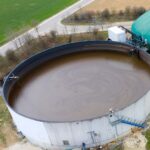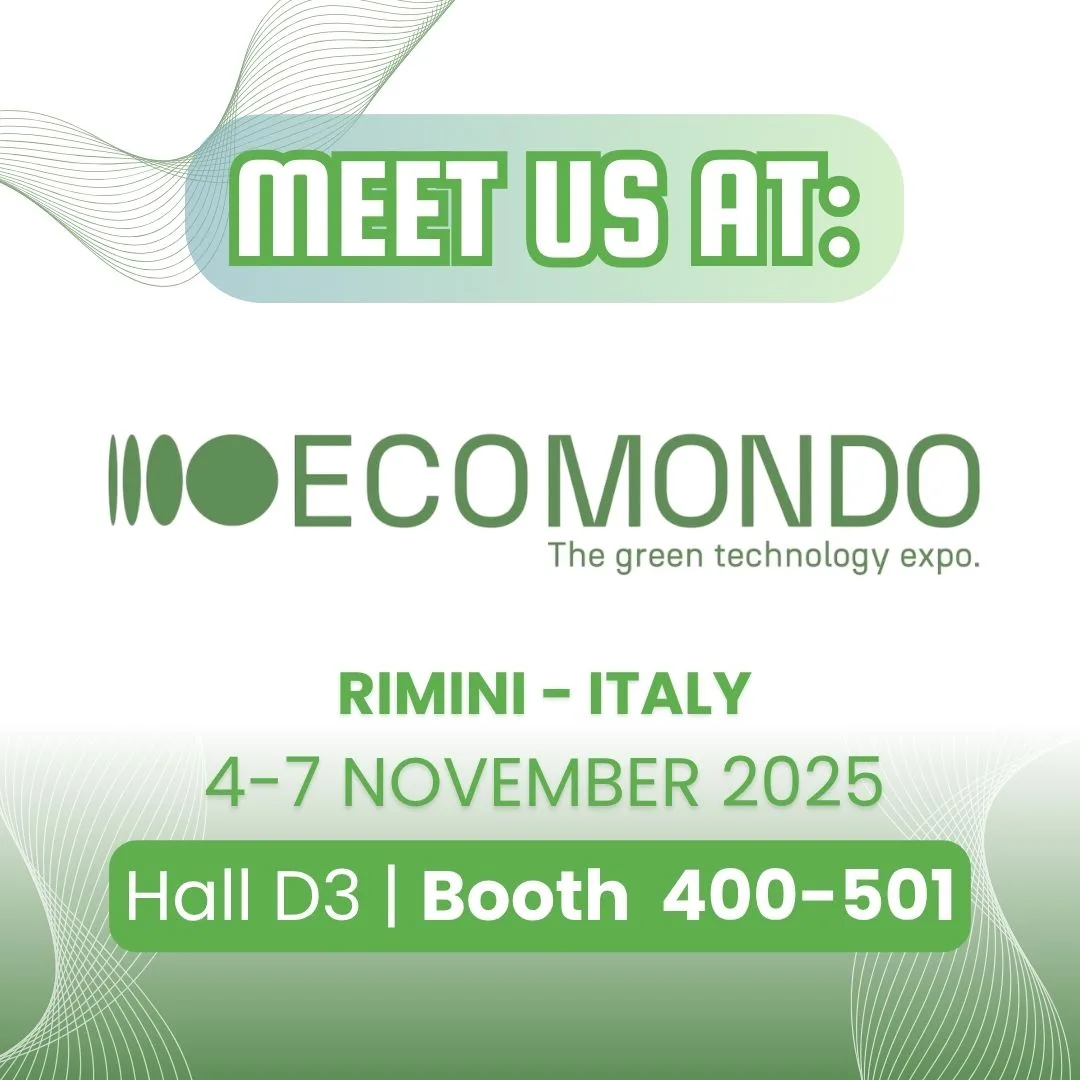
Differences Between Worm Humus and Manure: A Complete Guide to Sustainable Agriculture
05/09/2025
Natural approach to desulfurization in anaerobic digestion: microelements and microbial biodiversity
17/10/2025Soilless cultivation systems are part of the technological evolution of modern agriculture, offering innovative solutions to maximize productive yields and optimize resource utilization. Hydroponics, aquaponics and aeroponics constitute three distinct but complementary approaches, each characterized by specific operational techniques and control parameters.
Index
- Hydroponics Fundamentals: Technology and Operational Parameters
- Chemical-Physical Parameter Management
- Inert Substrates and Technical Characteristics
- Aquaponics: Integrated Ecosystems and Nitrogen Cycle
- Aeroponics: Advanced Technology and Precision Agriculture
- Commercial Applications and Market Sectors
- Technological Innovations and Future Prospects
- Conclusions and Operational Recommendations
Hydroponics Fundamentals: Technology and Operational Parameters
Basic Principles and System Configurations
Hydroponics is based on cultivating plants without soil, using water-soluble nutrient solutions to provide all essential elements for plant growth. Hydroponic systems are structured into three main configurations, each with specific characteristics for different productive applications.
The NFT (Nutrient Film Technique) system uses inclined channels where the nutrient solution flows in a thin film, ensuring optimal root oxygenation and rapid growth. Plants are positioned in net pots inserted into channel holes, with solution flow rates between 1-2 liters/minute per channel.
The DWC (Deep Water Culture) system involves suspending roots directly in the oxygenated nutrient solution through air pumps, ideal for leafy vegetables and rapid growth. The solution temperature must be maintained between 18 and 22 degrees Celsius to prevent root rot.
The Ebb & Flow (Flood and Drain) system alternates periods of flooding and drainage, allowing roots to absorb nutrients and oxygen in programmed cycles. Typical cycles involve flooding for 15-30 minutes every 2-4 hours, variable according to species and environmental conditions.


Chemical-Physical Parameter Management
Precise control of chemical-physical parameters represents the critical element for hydroponic system success. The optimal pH must be maintained in the 5.5-6.8 range, with preferential values of 5.8-6.0 to maximize nutrient uptake. Fluctuations greater than 0.3 units compromise the uptake of essential microelements.
Electrical conductivity (EC) varies according to phenological phases: during germination between 0.6 and 1.0 mS/cm, in vegetative growth between 1.0 and 1.8 mS/cm, in flowering between 1.8 and 2.5 mS/cm. Advanced systems with new generation fertilizers can operate with high EC up to 3.3 mS/cm, significantly increasing yields and quality.
Solution temperature must remain constant between 18 and 22 degrees Celsius to optimize root absorption and prevent thermal stress. Temperatures above 25 degrees Celsius drastically reduce dissolved oxygen, favoring root pathologies.
Inert Substrates and Technical Characteristics
Inert substrates constitute the physical support for root anchoring, directly influencing aeration, water retention and root system development. Rockwool represents the most professionally used substrate, with water retention capacity up to 80% of volume and naturally high pH requiring pre-conditioning.
Perlite offers excellent drainage and root aeration, with 2-5 mm granulometry for hydroponic applications, reusable after sterilization. Expanded clay guarantees stable structure and constant aeration, ideal for Ebb & Flow and DWC systems with 8-16 mm granulometry. Pumice with its light and porous structure allows high water absorption and conduction capacity.
Coconut fiber presents intermediate characteristics between retention and drainage, with stable C/N ratio and neutral pH, particularly suitable for biological systems. Vermiculite offers high cation exchange capacity but requires mixing with draining materials to avoid stagnation.
Aquaponics: Integrated Ecosystems and Nitrogen Cycle
Nitrogen Cycle Biochemistry
Aquaponics is based on symbiotic integration between aquaculture and hydroponics through the biogeochemical nitrogen cycle. The process begins with ammonia production (NH3/NH4+) derived from fish metabolites, a highly toxic compound with lethal concentrations above 2 mg/L.
Primary nitrification converts ammonia to nitrites (NO2-) through chemolithotrophic bacteria of the Nitrosomonas genus, a process requiring 4-6 weeks for stabilization in new systems. Nitrites maintain high toxicity for fish, with critical thresholds of 5-10 mg/L depending on species.
Secondary nitrification transforms nitrites into nitrates (NO3-) through Nitrobacter bacteria, a form usable by plants with negligible toxicity for fish up to concentrations of 150-200 mg/L. The process requires specific bacterial surface of 1-2 kg/m² of daily administered feed.
Fish Species and Zootechnical Parameters
Fish species selection conditions the performance of the entire aquaponic system, requiring evaluations of environmental tolerance, growth rate and organoleptic qualities.
Tilapia (Oreochromis niloticus) represents the most widespread species for robustness and adaptability. Optimal temperature 25-30 °C, tolerance 15-35 °C, pH 7.0-8.0, minimum dissolved oxygen 3 mg/L. Reaches commercial weight of 500-800 g in 6-8 months with feed conversion ratio FCR 1.6-2.0.
Carp (Cyprinus carpio, Hypophthalmichthys molitrix) offer superior thermal tolerance (4-34 °C) and rapid growth in polyculture. Common carp reaches 500-600 g in 10 months with optimal temperature 25-30 °C. Grass carp contributes to algae control with predominantly vegetable diet.
Trout require colder water (12-18 °C) but offer prized meat and uniform growth. They require high dissolved oxygen > and cooling systems in temperate environments.
System Dimensioning and Balancing
Aquaponic plant dimensioning requires precise calculations to balance fish organic load and plant purification capacity. The standard ratio provides 20-40 g of daily feed per m² of plant surface, variable according to species and breeding density.
Bacterial surface must guarantee 1-2 kg/m² of feed for complete nitrification, achievable through moving bed biofilters (MBBR) or submerged biofilters. Recirculation flow must ensure 1-2 changes/hour in fish tanks and residence times of 15-30 minutes in biofilters.
Aeroponics: Advanced Technology and Precision Agriculture
Physical Principles and Nebulization
Aeroponics represents the most advanced technology for soilless cultivation, based on nebulizing nutrient solutions directly on the suspended root system. The system completely eliminates substrates and containers, maximizing root oxygenation and nutritional efficiency.
Nebulization requires droplets of 20-50 micron dimensions to optimize absorption and prevent air saturation. Specialized stainless steel nozzles operate at pressures 60-100 PSI (4-7 bar) with flow rates 1-10 L/min according to plant number.
Nebulization cycles follow standardized protocols: 5-10 seconds ON every 3-5 minutes OFF for 24 hours/day. Longer durations cause root rot, while excessive intervals provoke water stress.
Environmental Control and VPD
Vapour Pressure Deficit (VPD) control represents the critical parameter for aeroponic optimization. Optimal VPD 0.8-1.2 kPa favors controlled transpiration and balanced growth. Values above 1.5 kPa cause water stress, while values below 0.4 kPa reduce transpiration.
Root zone air temperature must be maintained between 18-24 °C to prevent thermal shock and maximize metabolic activity. Relative humidity in root chambers must oscillate between 85-95% to prevent dehydration.
Control and Automation Systems
Aeroponic plants require advanced control systems to guarantee operational continuity. Digital cyclic timers programmable to the second ensure precision in nebulization cycles. Pressure sensors continuously monitor system efficiency, activating alarms for pressures below 4 bar.
UPS (Uninterruptible Power Supply) systems guarantee electrical continuity for 2-4 hours, preventing total crop losses in case of interruptions. Automatic backup pumps activate to maintain minimum pressure during maintenance.
Comparative Performance Analysis
|
System |
Water Savings |
Nutritional Efficiency |
Growth Speed |
Yield/m² |
|
Hydroponics |
85-90% |
High |
+30-50% |
3-5x |
|
Aquaponics |
90-95% |
Medium-High |
+20-40% |
2-4x |
|
Aeroponics |
95-98% |
Maximum |
+50-80% |
4-8x |
Aeroponics achieves maximum water efficiency through direct application of nutrient solution, eliminating losses from percolation and runoff. Hydroponics maintains high efficiency with closed recirculation systems, while aquaponics adds the plant purification factor.
Investments and Operating Costs
Investment costs vary significantly between systems: hydroponics 15-30 euros/m², aquaponics 40-80 euros/m², aeroponics 80-150 euros/m² for professional plants. Operating costs include electricity (30-40%), fertilizers (20-25%), labor (25-30%) and maintenance (10-15%).
Investment amortization requires 3-5 years for hydroponics, 5-8 years for aquaponics, 6-10 years for aeroponics, considering premium prices for soilless products. ROI (Return on Investment) is higher for high value-added crops (aromatic herbs, microgreens, baby leaf vegetables).
Commercial Applications and Market Sectors
Vertical Farming and Urban Agriculture
Soilless systems find optimal application in urban vertical farming, where space optimization and environmental control justify high investments. Multi-level aeroponic plants reach densities of 400-800 plants/m² for microgreens and leafy vegetables.
Peri-urban agriculture predominantly uses hydroponic systems in climate-controlled greenhouses for intensive production of tomatoes, peppers, cucumbers with yields 3-5 times higher than traditional cultivation. Aquaponic systems adapt to educational and demonstrative contexts for environmental sustainability.
Niche Markets and Premium Products
Aeroponics finds commercial outlet in premium products (medicinal herbs, gourmet microgreens, baby vegetables) where growth speed and superior organoleptic quality justify prices 2-3 times higher. High-end restaurants and luxury catering represent target clientele for aeroponic products.
Aquaponics develops integrated fish-vegetable markets for sustainable catering and farmers markets where environmental narrative adds commercial value. Agritourism and educational farms integrate aquaponic systems for offer diversification.
Phytosanitary Management and Prevention
Integrated Biological Control
Soilless systems require specific phytosanitary approaches for preventing root and foliar pathologies. Trichoderma harzianum and Bacillus subtilis represent effective biological antagonists for controlling Pythium and Fusarium in hydroponics.
UV sterilization of nutrient solution (dose 40-100 mJ/cm²) eliminates pathogens without chemical residues. Activated carbon filtration removes phenolic compounds and toxic metabolites from recirculation.
Advanced Monitoring and Diagnostics
IoT sensors for continuous monitoring of pH, EC, temperature, dissolved oxygen allow preventive interventions and automatic optimization. Periodic foliar analyses (every 15-20 days) identify nutritional deficiencies before symptomatological manifestation.
Portable digital microscopy for early identification of arthropods and fungal pathogens. Rapid immunoenzymatic kits for viral diagnosis in 15-30 minutes directly in the field.
Technological Innovations and Future Prospects
Artificial Intelligence and Machine Learning
Integration of machine learning algorithms for automatic optimization of cultivation parameters represents the technological frontier of soilless systems. Computer vision for automatic recognition of abiotic and biotic stress through multispectral image analysis.
Predictive models based on agronomic big data for yield optimization and waste reduction. Expert systems for automatic diagnosis and prescription of corrective interventions.
Sustainability and Circular Economy
Evolution toward carbon neutral systems through integration of renewable energies and waste heat recovery. Valorization of by-products (plant biomasses, fish waste) for biogas, biomethane or biohydrogen production and organic fertilizers.
Biodegradable packaging from plant waste for commercialization of soilless products. Blockchain traceability for sustainability certification and quality of production processes.
Conclusions and Operational Recommendations
Soilless cultivation systems represent the necessary evolution of modern agriculture toward sustainable and highly efficient production models. The choice between hydroponics, aquaponics and aeroponics must be based on specific technical evaluations considering production objectives, economic availability, technical skills and reference markets.
Hydroponics constitutes the most balanced solution for professional approach to soilless systems, guaranteeing the best cost-benefit ratio and operational reliability. Aquaponics adapts to niche contexts where environmental sustainability and production diversification create added value. Aeroponics represents the most profitable investment for very high value-added productions and niche and premium markets.
Operational success requires specialized technical training, advanced monitoring systems and standardized management protocols. Technological evolution toward automation and artificial intelligence will make these systems increasingly accessible and competitive compared to traditional agriculture.












